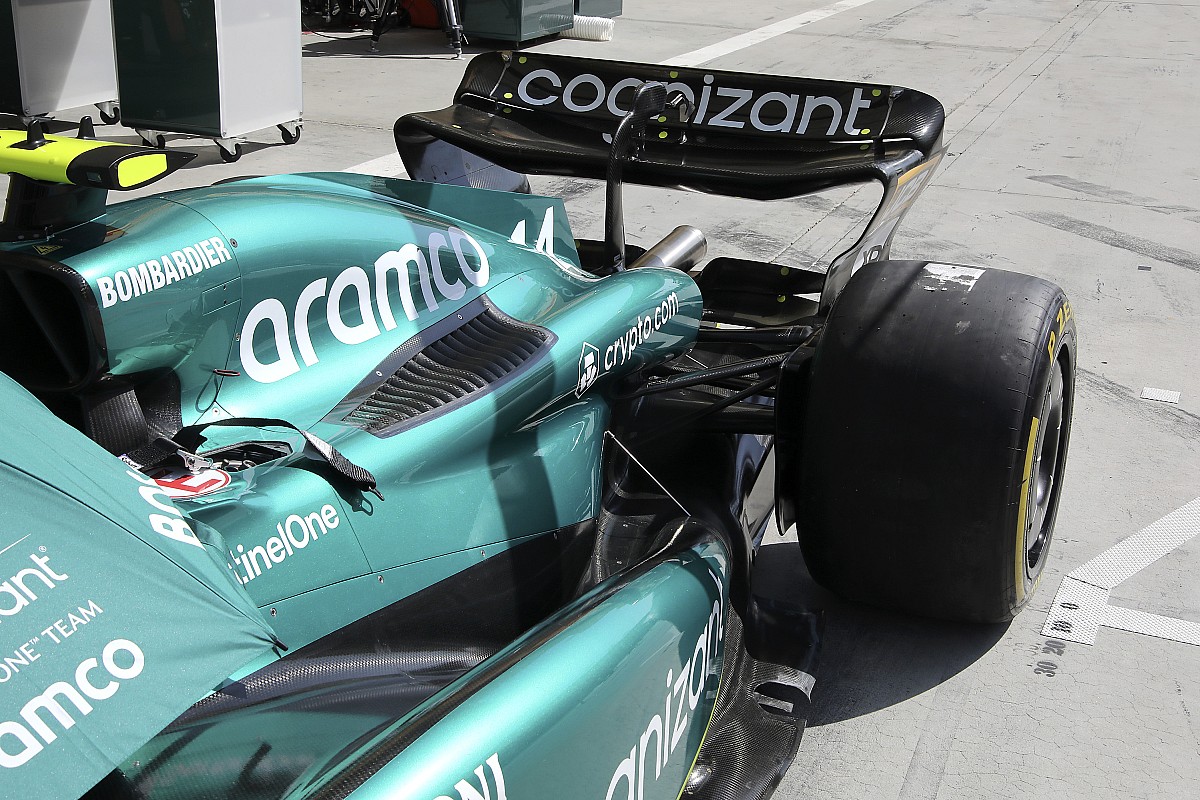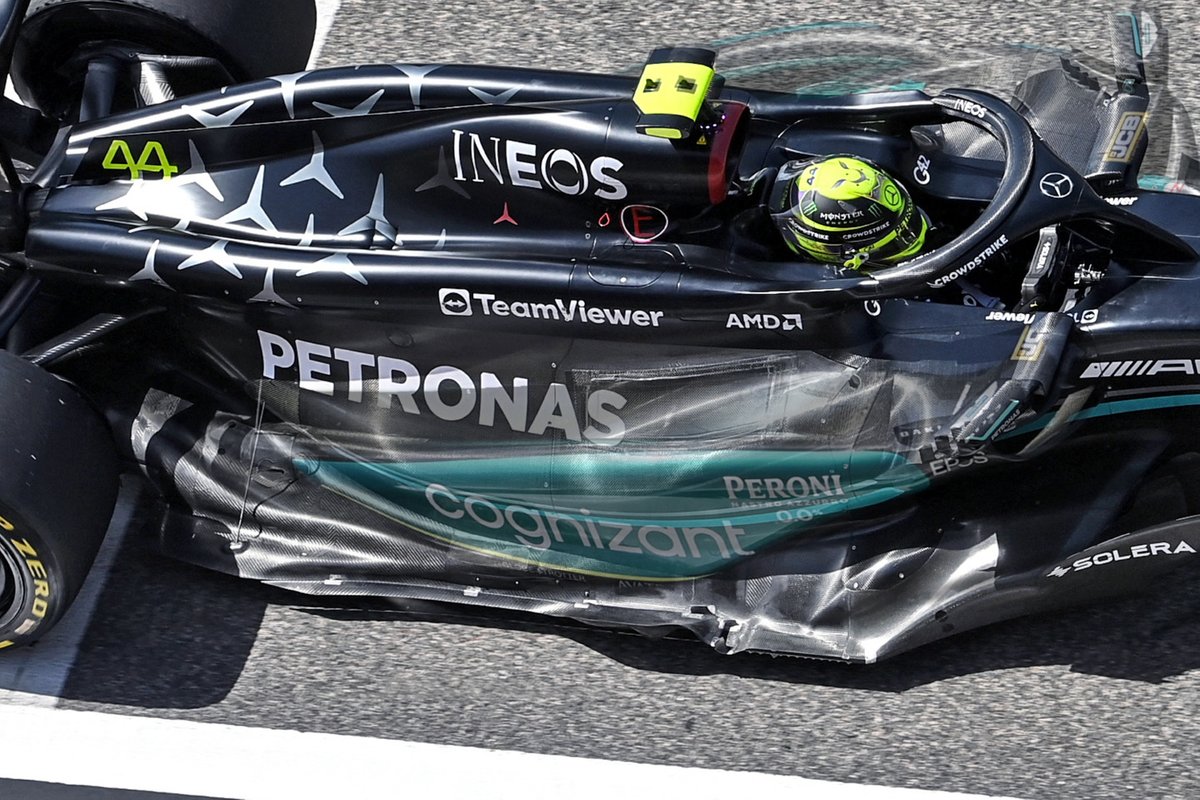
Fernando Alonso's shock podium finish in Bahrain, allied to incredible pace in pre-season testing, has left the team in the mix near the front of the field.
And while there has been a great deal of analysis about the factors that have helped the team shine, there is also a great deal of intrigue around interesting technical solutions on the AMR23.
None perhaps stands out as much as what has become known as its 'slidepods', the aggressive solution that takes the Red Bull downwash concept to another level.
Here we take a look at what Aston Martin has done, and how it has achieved it.
Over-egging what we see

First, a caveat. It is very easy in Formula 1 to attribute success to areas of cars that look different to rivals.
However, for the current generation of cars, the secret sauce from an aerodynamic perspective is hidden away out of sight, as it is the underfloor and diffuser that drive a lot of lap time.
But given the lack of imagery and intel on these closely guarded secret areas of the cars, it's the sidepods that tend to garner the most attention, especially as there's a distinct difference in design language amongst the leading teams here.
The obvious visual differences between these are often seen by many as a sign of why one car is quicker than another, even though that is not strictly true.
That said, it's interesting that we now have three main branches in the development tree - the downwash ramp, the bathtub and the zeropod, with some designs straddling all three.
Aston Martin could easily put itself in that final category, as it has used the additional CFD and wind tunnel resources at its disposal to build on the downwash concept that it switched to during 2022.
And, while Aston Martin now has the most extreme example, it's Alpine that we have to thank for this new branch of the downwash development tree.
Alpine's A522 sidepod design had started out as a phase one downwash ramp, similar to Red Bull and AlphaTauri. However, it slowly morphed into a hybrid of it and the bathtub design, maximizing the central slope portion of the bodywork to create a slide within it.
In order to excavate its own, much deeper downwash ramp, Aston Martin needed to look no further than Mercedes for inspiration, as it shares the same power unit and rear-end architecture, which undoubtedly gave it food for thought in terms of how to deal with the packaging of internal components and how that impacts the shape of the bodywork.


As seen here with the W13, Mercedes has, for a long time, been excavating the chassis in order to push the radiators closer to the car's centreline.
Other teams followed suit some time ago too, allowing them to narrow the external bodywork.
Mercedes' original zeropod concept built upon the approach taken from the previous regulations, with the bodywork shrink-wrapped as tight as possible to the internals.
However, the new regulations have taken away many of the aerodynamic flow conditioning tools that teams used to make this method as effective as it once was. This explains why most of the grid have opted for sidepods that have an aerodynamic facade along their flank.

Overlaying the AMR23's 'slidepods' over the W14's MK2 'zeropod' design we can see how the internal footprint of the components, such as the radiators, coolers and electronics can be housed significantly inboard of the slidepod's flank.
This is how Aston Martin has been able to create the central slide in the bodywork, as it is using a hollow aerodynamic facade to make up the sidepod's flank.
It's similar to how and why teams have opted to create the hunched shelf on the engine covers of their challengers, with the bodywork serving an external aerodynamic purpose as it is pinched in much closer to the internal components.


At the front end of the AMR23's sidepods, it's also clear to see the influence drawn from the Red Bull and Ferrari design stables too, as the inlet and undercut designs of both can be identified within Aston Martin's design language.
This includes Red Bull's novel underbite approach, whereby the lower leading edge of the inlet is drawn forward, leaving a more open-topped inlet than you'd otherwise find. It is also paired with an inlet shape similar to Ferrari's on the AMR23.
This is a fine example of how Aston Martin has taken proven concepts from its rivals and used additional CFD and Wind Tunnel resources to improve upon them.
And it is probably not done there yet either, as its seventh-place finish in 2022 means it returns to 100% of the ATR coefficient up until 30th June this season.
This gives it a significant advantage over its closest competitors, Red Bull, Ferrari and Mercedes, who have to operate with 60, 75 and 80% respectively in the same period and should help it close in further on its rivals as a consequence, while giving it a springboard for next year's challenger too.
Eye for detail


The AMR23's slidepods are an obvious visual difference from last season but the car does have numerous other, smaller, tricks up its sleeve, including the way in which the last element of its front wing is connected to the endplate.
Like many of the teams on the grid, Aston Martin is looking for ways to subvert the technical regulations and recreate some of the outwash effects they are supposed to prevent.
In order to achieve its objectives, the last element has been angled away from the main body of the endplate (red arrow), which provides multiple shedding surfaces for vortices to propagate.
Meanwhile, a metal insert provides enough support that the wing complies with the relevant load tests that must be completed and also allows a small section of the flap ahead to be cut out, further enhancing the aerodynamic benefits
The lower section of the rear wing endplate also has a neat trick up its sleeve, as while the regulations had sought to prevent the upwash strikes we'd seen in this location in previous years from appearing, Aston Martin has found a way around this.
The endplate features a distinctive swage line (red arrow) that promotes an upwashing effect on the local airflow, with the shape of the forward section of the endplate specifically tailored to further boost the design's potential.



!["[T]he First and Fifth Amendments Require ICE to Provide Information About the Whereabouts of a Detained Person"](https://images.inkl.com/s3/publisher/cover/212/reason-cover.png?w=600)



